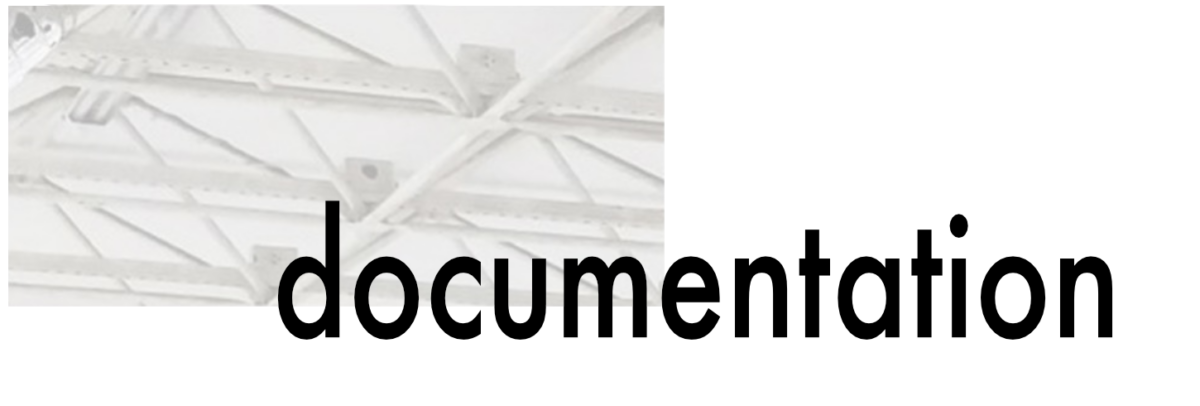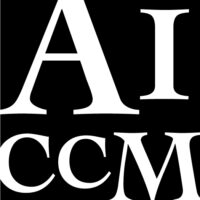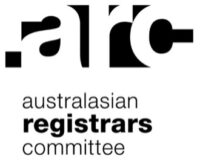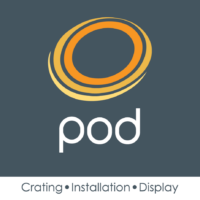
summary
Accurate documentation is integral to the planning and delivery of exhibitions. This session reflects on the meaning and purpose of different documentation methods in the development of exhibitions. A combination of personal reflections and case studies are included from both Australian institutions and international cultural organisations to discuss new documentation tools and approaches and the possibilities for future development.
moderator & presenter
Vesna Živković – Senior Conservator – Preventive Conservation Kaitauwhiro Ārai Tupuheke Matua Alexander Turnbull Library, National Library of New Zealand Te Puna Mātauranga o Aotearoa
Vesna Živković graduated archaeology at University of Belgrade, Faculty of Philosophy, Department of Archaeology (2000) and obtained master’s degree in preventive conservation at University Paris 1, Pantheon Sorbonne (2006). She holds PhD in History and Philosophy of Natural Sciences and Technology, University of Belgrade (2022).
From 2001 she worked at the National Museum, Belgrade, as a preventive conservator and has been instrumental in developing preventive conservation services and activities in Serbia. Vesna participated in the establishment of the Department for Preventive Conservation at the National Museum in Belgrade and was responsible for the Centre for the Preventive Conservation in the Central Institute for Conservation in Belgrade. Currently, Vesna is working in the National Library of New Zealand as Senior Conservator – Preventive Conservation.
Vesna has been working on planning the environmental management for heritage collections and generating preservation plans and terms of reference for the preventive conservation aspect of the heritage institutions reconstruction projects and storage reorganization projects. At present Vesna is a subject matter expert on preventive systems and processes used to preserve or protect collections and provides advice on the development of preservation policy and strategy for Alexander Turnbull Library collections.
Our collections matter: sustainable transformation in use, development, and conservation of heritage collections
Vesna Živković
It is considered that collections and their conservation, besides being an effective way of safeguarding and transmitting cultural and natural heritage, provide the basis for enabling a wide range of activities and programmes, such as learning, education, participation and research, and advancement of sustainability in its different pillars.
To meet the goals of the United Nation’s 2030 Agenda ICCROM (International Centre for the Study of the Preservation and Restoration of Cultural Property) launched an initiative to support collections-based institutions to make concrete contributions towards sustainable development focusing on any of the five Ps (People, Planet, Prosperity, Peace, and Partnerships). The Our Collections Matter includes activities on compiling and developing meaningful practical methods and tools that these organizations could use in their operations and for their communities of users. An essential component of this project is training and capacity building and involves a change of mindsets and behaviours within and beyond the cultural heritage sector, as well as recognition that collections and conservation work are a valued actor in sustainable development.
The purpose of this presentation is to highlight the role of different tools already in use by cultural heritage organisations to accomplish sustainable development in the context of putting on exhibitions.
Rites: Dancing towards a shared future
Margot Anderson, Megan Williams & Chrissy Chan
Rites: Dancing towards a shared history was a First Nations led project celebrating the 25th anniversary of the first collaboration between The Australian Ballet and Bangarra Dance Theatre. Consisting of an online exhibition, a podcast, an education resource and a live Q&A event, this project took collaboration to a new level for the project team while continuing to demonstrate our commitment to documenting performing arts history in a sustainable way.
This presentation will explore the process of working in a collaborative and inclusive way to reach a broader audience through digital content. It will also highlight our efforts to include multiple voices under the guidance of proud Bidjara woman and former Bangarra dancer, Yolande Brown. The ongoing benefits of documenting the creative process of the performers who helped bring Rites to the stage through recorded interviews will also be explored as an example of sustainable storytelling.
Just as Rites brought two companies of diverse backgrounds together, this project relied heavily on the spirit of true collaboration and inclusivity, gathering the reflections of dancers from both companies. It led us from Arnhem Land to New York and by necessity, the entire project was undertaken online.
We reveal the challenges and rewards that came with letting go as well as the tools and methods we developed along the way to build and manage a finely balanced collaborative space.
Where the wild things are not.
Charlotte Walker, Danielle Measday & Elizabeth McCartney
Wild: Amazing Animals in a Changing World (2009-2021) and Darwin to DNA (2000-2021), were long- term exhibitions at Melbourne Museum. The galleries displayed almost 800 specimens from Museums Victoria’s natural sciences collection, mostly taxidermy mounts. Darwin to DNA’s preservation challenges involved the prolonged exhibition of specimens associated with the historical collectors including Charles Darwin, Alfred Russell Wallace and John and Elizabeth Gould. The Wild gallery’s preservation challenges relating to open display have been previously documented (see Babister and Measday 2016) and responding to incidents of physical and pest-related damage were a regular feature of gallery maintenance. Despite these challenges Wild was one of the Museum’s most loved exhibitions, and the closure was mourned by the public. The de-installation of these galleries and processing of the hundreds of fragile specimens was a challenging task and required significant collaboration between museum departments and specialisations. This presentation will address the response to the gallery closures and conservation’s role in communicating with the public as well as the impact of Covid-19 lockdowns. A discussion of the process of de-installation and rehousing of specimens onto new storage bases, hazards testing with XRF, condition documentation of specimens using Articheck condition reporting software, photography and triaging for repairs, cleaning of specimens, cycling specimens through freezers for IPM treatment and reintegrating specimens back into taxonomic storage in their home collections will also be included. Finally, the health monitoring of staff working for prolonged periods with taxidermy treated with heavy metals such as arsenic and mercury will be discussed along with hazards management on the worksite, cleaning and disposal of gallery built form. Future work on this project will be the stabilisation of specimens in need of immediate repair and analysis of the condition data to understand and quantify the impact of extended display for these valuable specimens.
Remote streaming | Virtual condition reports
Catherine Earley
The worldwide lockdowns in 2020-21 were responsible for hurried experimentation and quickly convened regional summits. The subject was technology, to allow condition reporting of loaned artworks when either lender or borrowed was unable to be present in person. Initially it involved those loans needing to be brought home, but then also provided methods for proposed loans to go ahead without couriers. In 2020 the NGV was hosting a multinational collection of works in the large Haring|Basquiat exhibition and relied on basic phone and iPad streaming to connect with those wishing to have a presence at pack up. Fortunately, trust in the staff engendered at install led to high levels of trust at deinstall with only one or two lenders requesting visual oversight of packing and crating. Since then there have been numerous instances of virtual condition reporting but it was the 2021 Goya: Drawings from the Prado Museum exhibition that first formalised our technical approach as it was both installed and deinstalled with Prado conservator and registrar looking on from a distance. This short presentation will describe the purposefully simple methods we used for the Goya install and the modified approach at deinstall. It discusses the insurance implications of new approaches and will share some universal observations that have arisen from attempts to look in microscopic detail at a surface 1000s of kilometres away.
Stranger than Kindness, a Nick Cave exhibition: Innovating digital condition reporting to enhance sustainability of travelling exhibitions
Carmela Lonetti, Ria Green & Megan Williams
Documentation of object condition is a vital component of travelling exhibitions. Stranger Than Kindness: The Nick Cave Exhibition – a collaboration between Arts Centre Melbourne (ACM) and the Royal Danish Library (RDL) – opened at The Royal Danish Library in June 2020. Early in the project, digital condition reporting was proposed to promote sustainability. In the absence of existing digital tools that met our requirements, the team decided to innovate using a combination of software and our EMu database.
The challenges in implementing a digital reporting system were evident early in the process and related predominantly to a lack of integration between the different software components. The ‘Concepts’ app for Windows used to produce annotated images was easy to use and had the advantage of allowing images to be zoomed in without loss of resolution. However, the files were large and had to be shared via the cloud. The process required technical knowledge to install software and downloading image files and PDF format condition reports was time consuming. A separate process for ‘signing off’ each condition report using Microsoft Forms added further complexity.
Ultimately, our thorough pre-planning and the willingness of our collaborators to trial a new system, meant that we did experience a level of success and interesting learnings. This paper discusses the advantages of this digital reporting system, the challenges it presented but also the possibilities for further development.
Putting on Picasso. Two Conservators of Exhibitions from the National Gallery of Victoria reflect critically on documentation within the institutional context of a blockbuster exhibition
Janelle Borig & Camielle Fitzmaurice
The National Gallery of Victoria’s recent Melbourne Winter Masterpieces exhibition ‘The Picasso Century’ will be used as a case study to explore various forms of documentation and the impact they have in practice. This will demonstrate how NGV Exhibition Conservation are required to be open and flexible to new processes and sudden changes, all while adhering to the loan agreement. Despite conservators and institutions exploring and using digital condition reporting technologies for some time, this was our first occurrence where most of a show arrived with only digital condition reports, driven by the lenders’ desire to be paperless. Although there was initial hesitation on our part due to unfamiliarity and the time constraints of a huge install, the French-developed ArtReport application left our exhibition conservators impressed with its ease of use and clever features. This has inspired us to look critically at a wider role for digital condition reports in our processes going forward. At the same time, our priorities remain to ensure that information is correct, is easily stored and accessible, and meets the requirements of our insurer. The hardware, software and network needs are discussed along with the pros and cons. We will also consider the concept of the digital footprint as we address the issue of sustainability in our field. Other documentation including the loan agreement, design layout and risk assessment will be discussed in terms of how they dictated the practical aspects of the exhibition space. Whilst strict lender requirements are considered non-negotiables, we show how sudden changes in layout to accommodate curator wishes necessitated us implementing a framing and glazing project during the install. This was only possible due to our ability to draw on our skilled conservation technician and excellent resources built up from years of experience.
Bruno Contenotte’s Translumen East: A unique and challenging piece in the lab and on display
Silvia Da Rocha & Madeleine Snedden
The Conservation of the Bruno Contenotte kinetic artwork Translumen East was a study in patience, collaboration, hope, and ultimately – failure. The sculpture was only briefly displayed in the 2022 exhibition Light and Darkness at the Chau Chak Wing Museum before the sum total of its previous battles with gravity, repairs, and possibly a flawed initial design led to its removal from temporary display. Approaches to conservation were throughout guided by previous documentation, original letters to and from the artist, and current approaches to the treatment and display of modern and contemporary artwork. On the way collaboration with several individuals including specialist time-based media conservators, art curators, and art technicians led to unusual conservation techniques and ultimately difficult decisions about this interesting and unique piece.
Sustainable Museum
Choi Sangho
There is widespread social discussion over the environmental crisis, and the transition to eco-friendly energy has become an important issue in many nations. Politicians tout myriad new environmental policies, and countless meetings of experts are held, proffering complex solutions to the environmental crisis. In the field of education, the environment and sustainability have become established parts of the curriculum. Even the corporate world is increasingly concerned. It is undeniable that environmental destruction is occurring rapidly, as studies and reports continually present dire warnings.
Sustainable Museum: Art and Environment begins with the observation that there is no mention of exhibitions, of resource-intensive spectacles and the museum system that enables such exhibitions, in the era of growing awareness of the environmental crisis. The intention is not to highlight the hardships facing museums, nor to condemn them. The key point is to acknowledge the reality of the situation facing museums, which have been protected by the capitalist world order. In other words, the fact must be recognized that current museum system, created under capitalism and now near universal, are maintained at the cost of violence towards and destruction of the environment. The future envisioned by this exhibition must emerge from that which exists in the present and, in general, that which exists in the present must first be properly understood if we are to reach the future.




